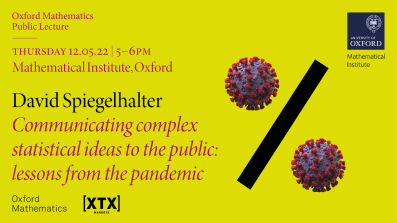Macroscopic Transport in Heterogeneous Porous Materials
Lucy Auton
Solute transport in porous materials is a key physical process in a wide variety of situations, including contaminant transport, filtration, lithium-ion batteries, hydrogeological systems, biofilms, bones and soils. Despite the prevalence of solute transport in porous materials, the effect of microstructure on flow and transport remains poorly understood and improving our understanding of this remains a major challenge. In this presentation, I consider a two-dimensional microstructure comprising an array of obstacles of smooth but arbitrary shape, the size and spacing of which can vary along the length of the porous medium, allowing for anisotropy. I use a nontrivial extension to classical homogenisation theory via the method of multiple scales to rigorously upscale the novel problem involving cells of varying area. This results in simple effective continuum equations for macroscale flow and transport where the effect of the microscale geometry on the macroscopic transport and removal is encoded within these simple macroscale equations via effective parameters such as an effective local anisotropic diffusivity and an effective local adsorption rate. For a simple example geometry I exploit the two degrees of microstructural freedom in this problem, obstacle size and obstacle spacing, to investigate scenarios of uniform porosity but heterogenous microstructure, noting the impact this heterogeneity has on filter efficiency.
This model constitutes the development of the core framework required to consider other crucial problems such as solute transport within soft porous materials for which there does not currently exist a simple macroscale model where the effective diffusivity and removal depend on the microstructure. Further, via this methodology I will derive a bespoke model for fluoride and arsenic removal filters. With this model I will be able to optimise the design of fluoride-removal filters which are being deployed across rural India. The design optimisation will both increase filter lifespan and reduce filter cost, enabling more people to access safe drinking water
Averaged interface conditions: evaporation fronts in porous media
Ellen Luckins
Homogenisation methods are powerful tools for deriving effective PDE models for processes incorporating multiple length-scales. For physical systems in which interface processes are crucial to the overall system, we might ask how the microstructure impacts the effective interface conditions, in addition to the PDEs in the bulk. In this talk we derive an effective model for the motion of an evaporation front through porous media, combining homogenisation and boundary layer analysis to derive averaged interface conditions at the evaporation front. Our analysis results in a new effective parameter in the boundary conditions, which encodes how the shape and speed of the porescale evaporating interfaces impact the overall drying process.


